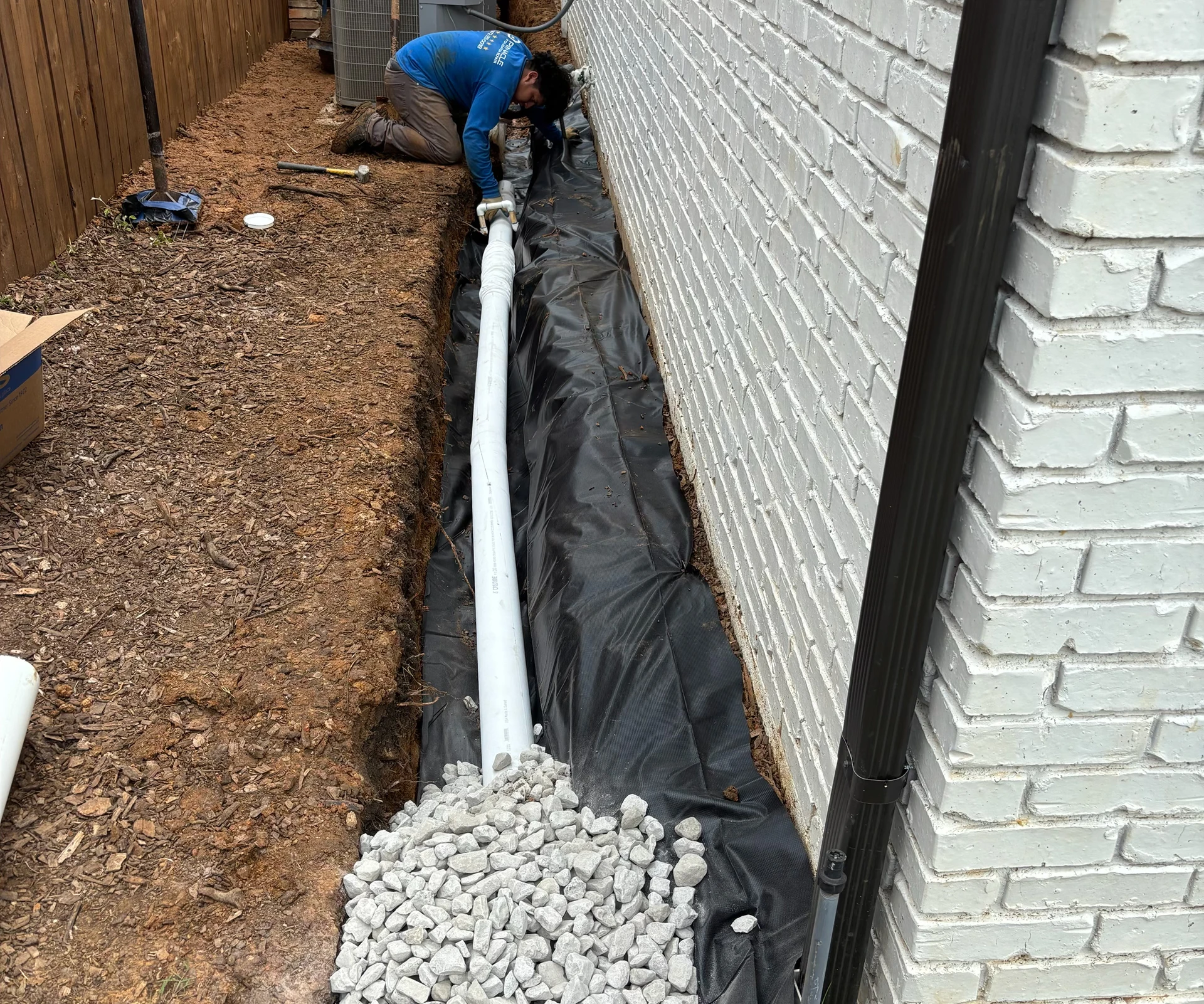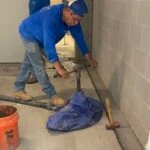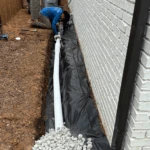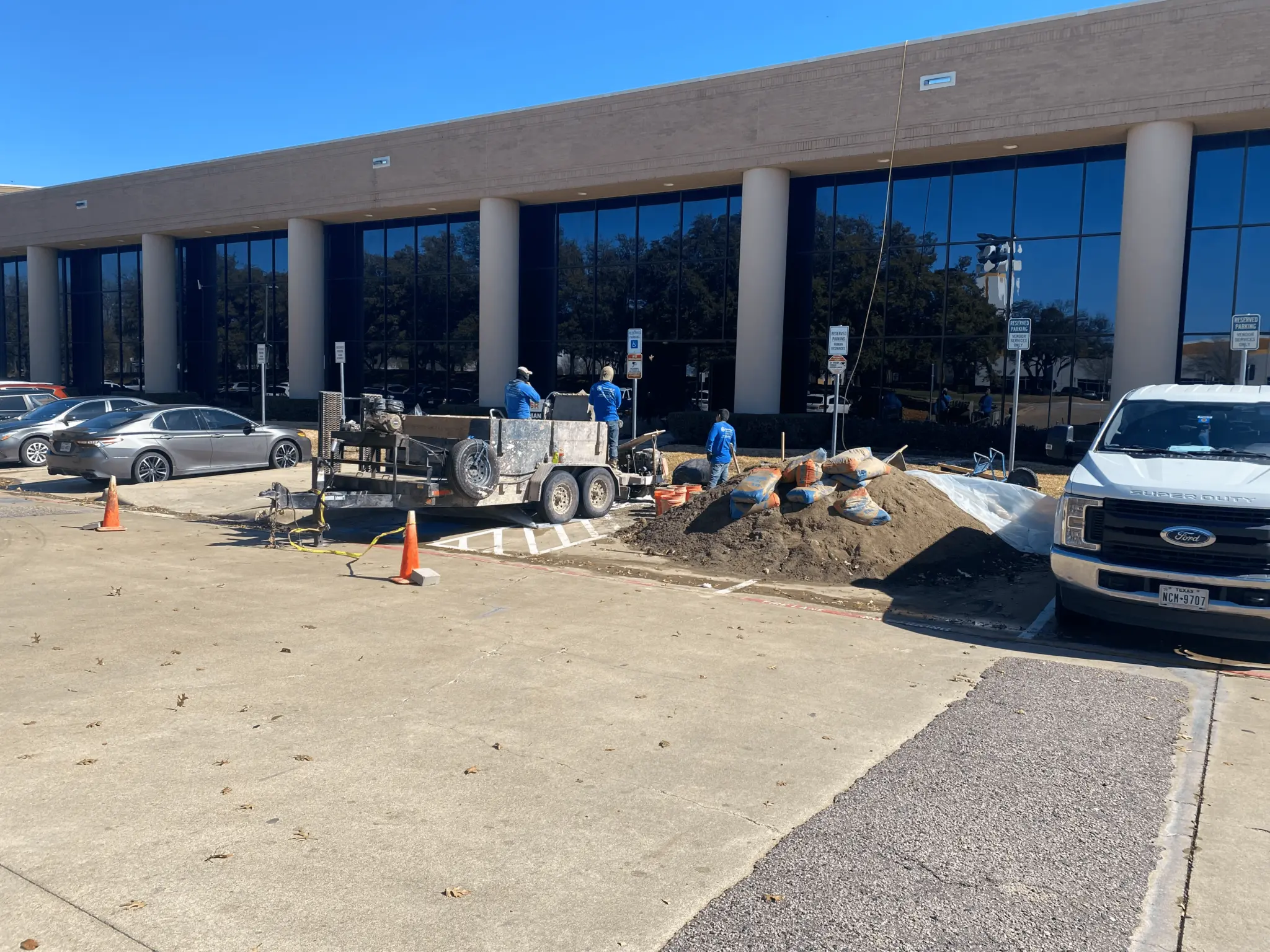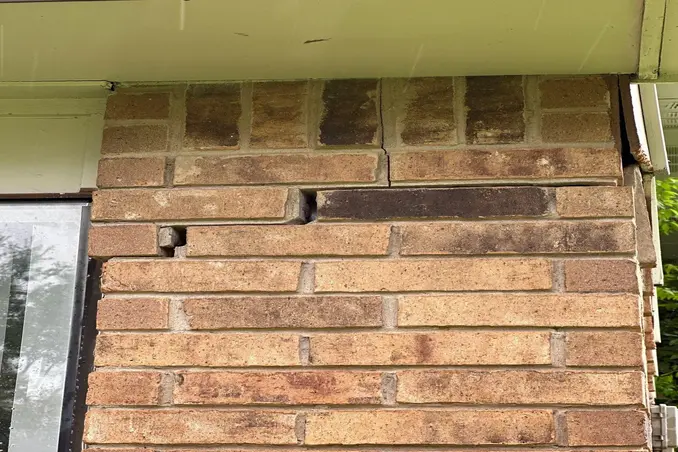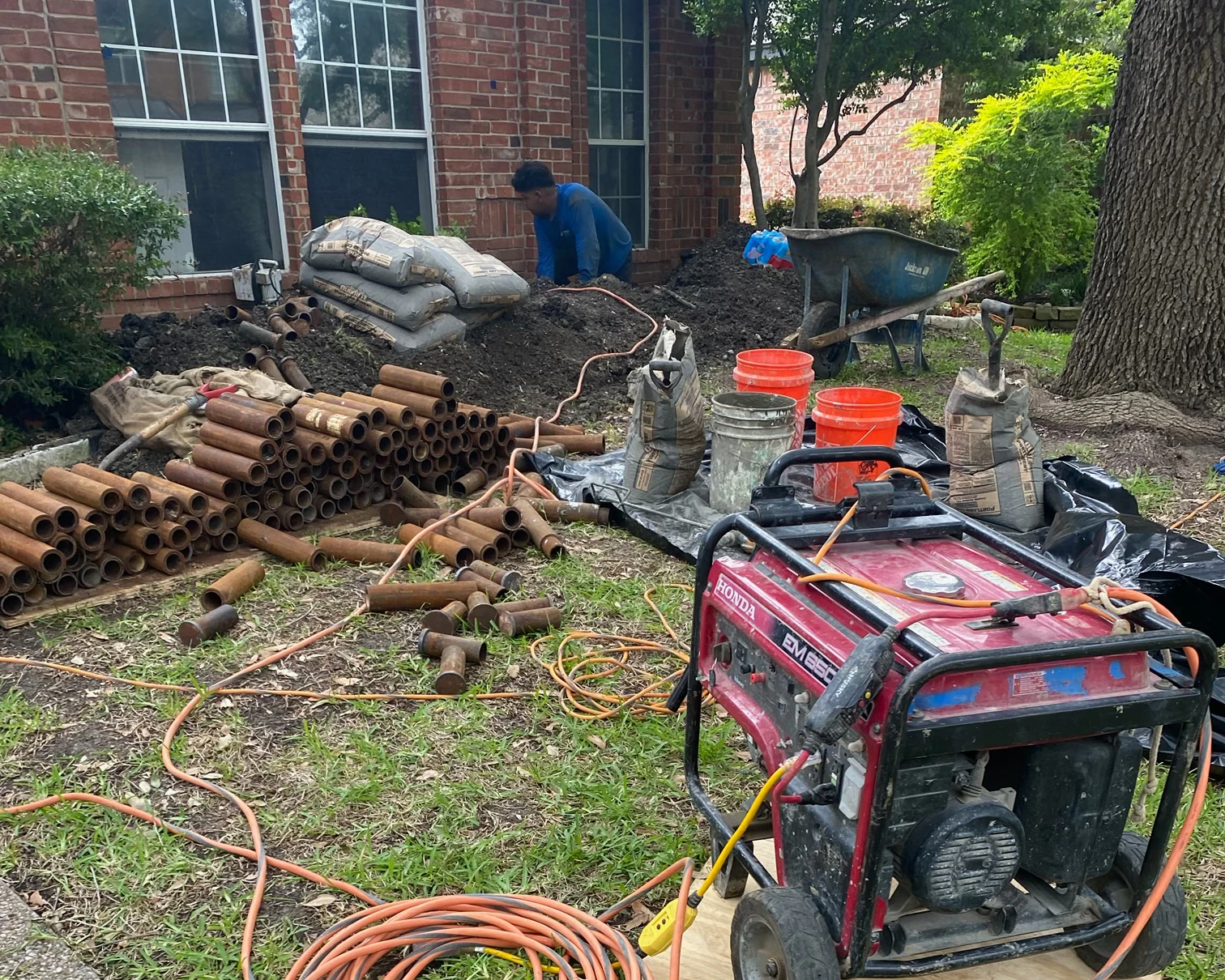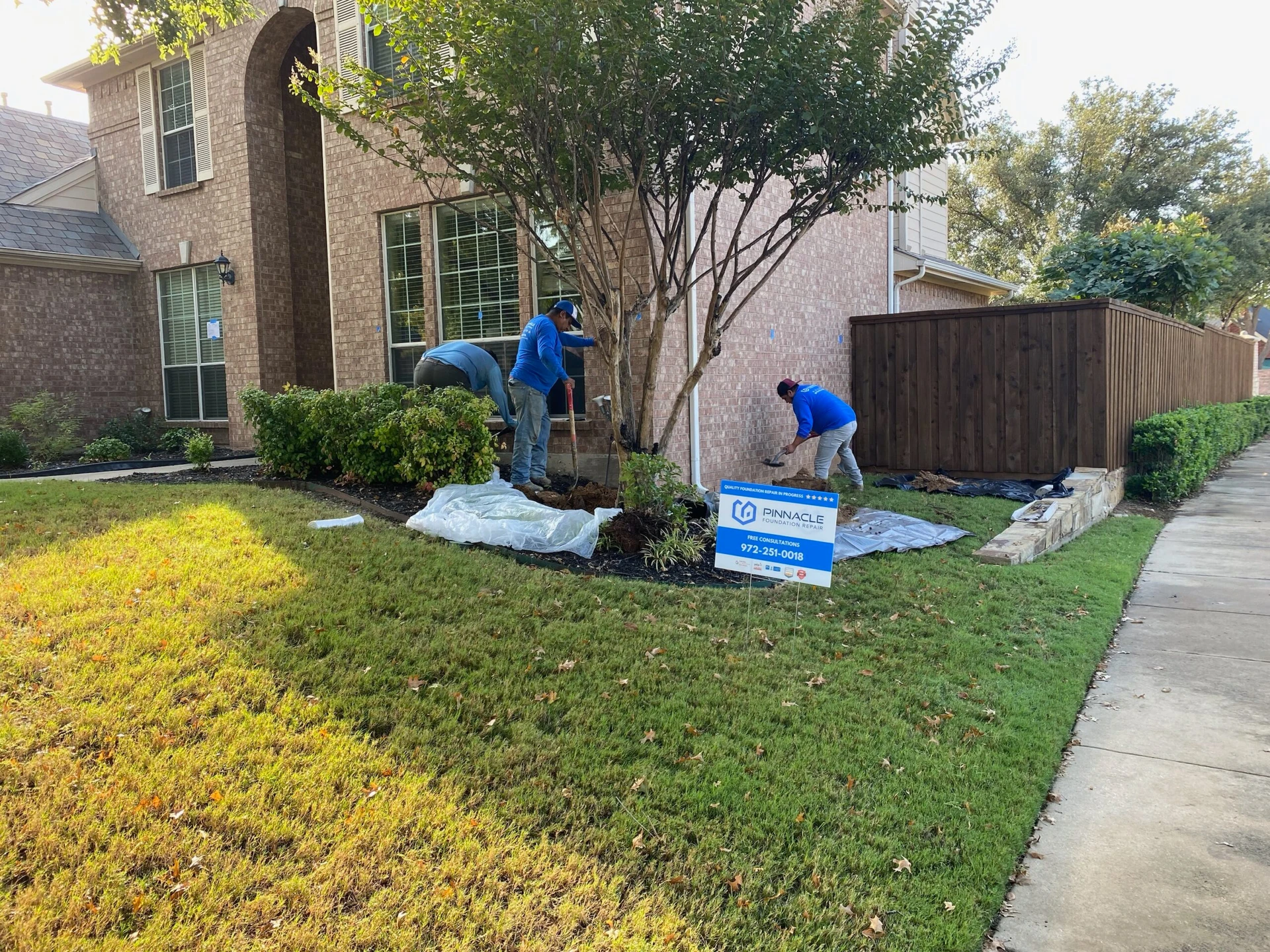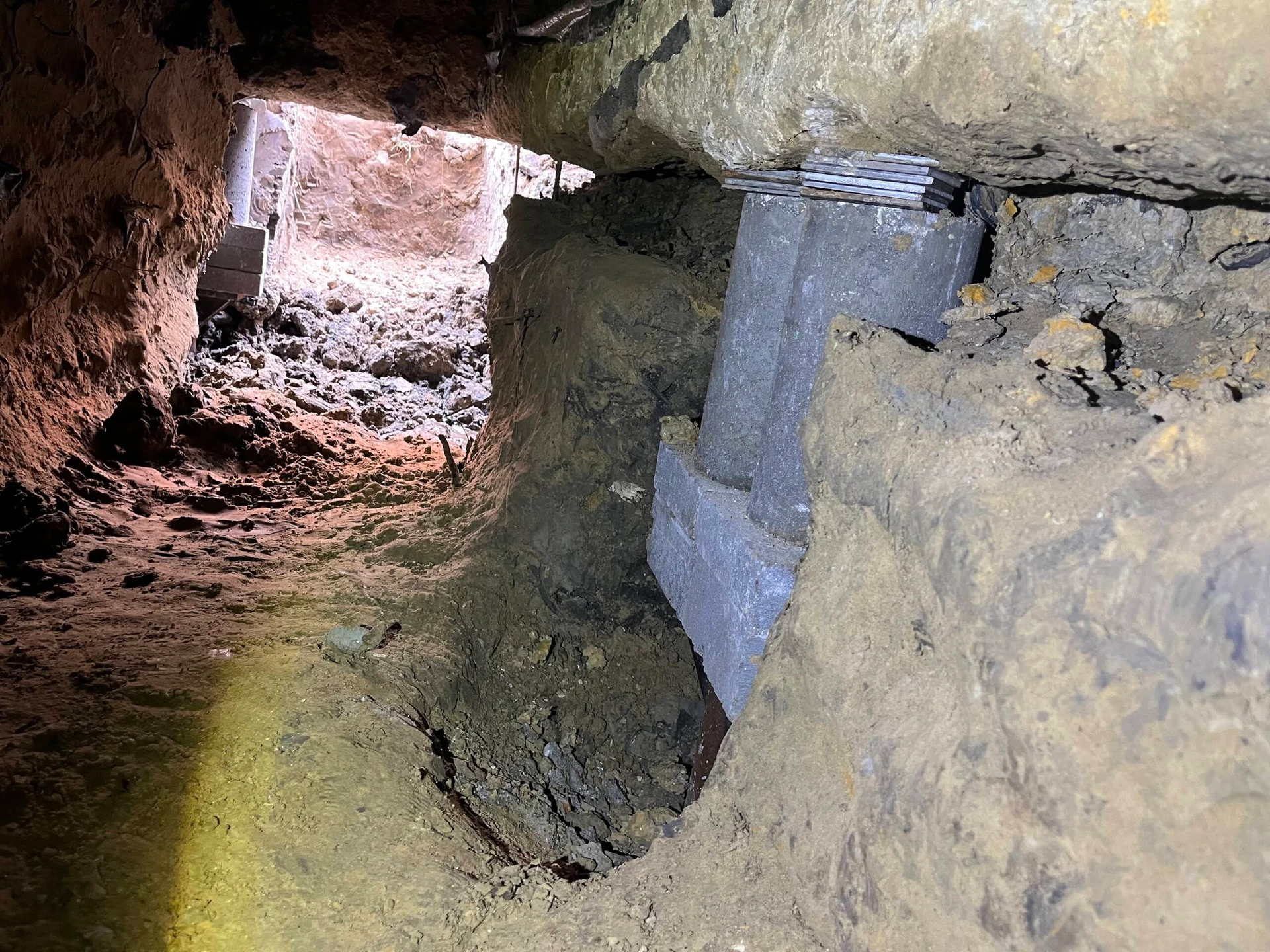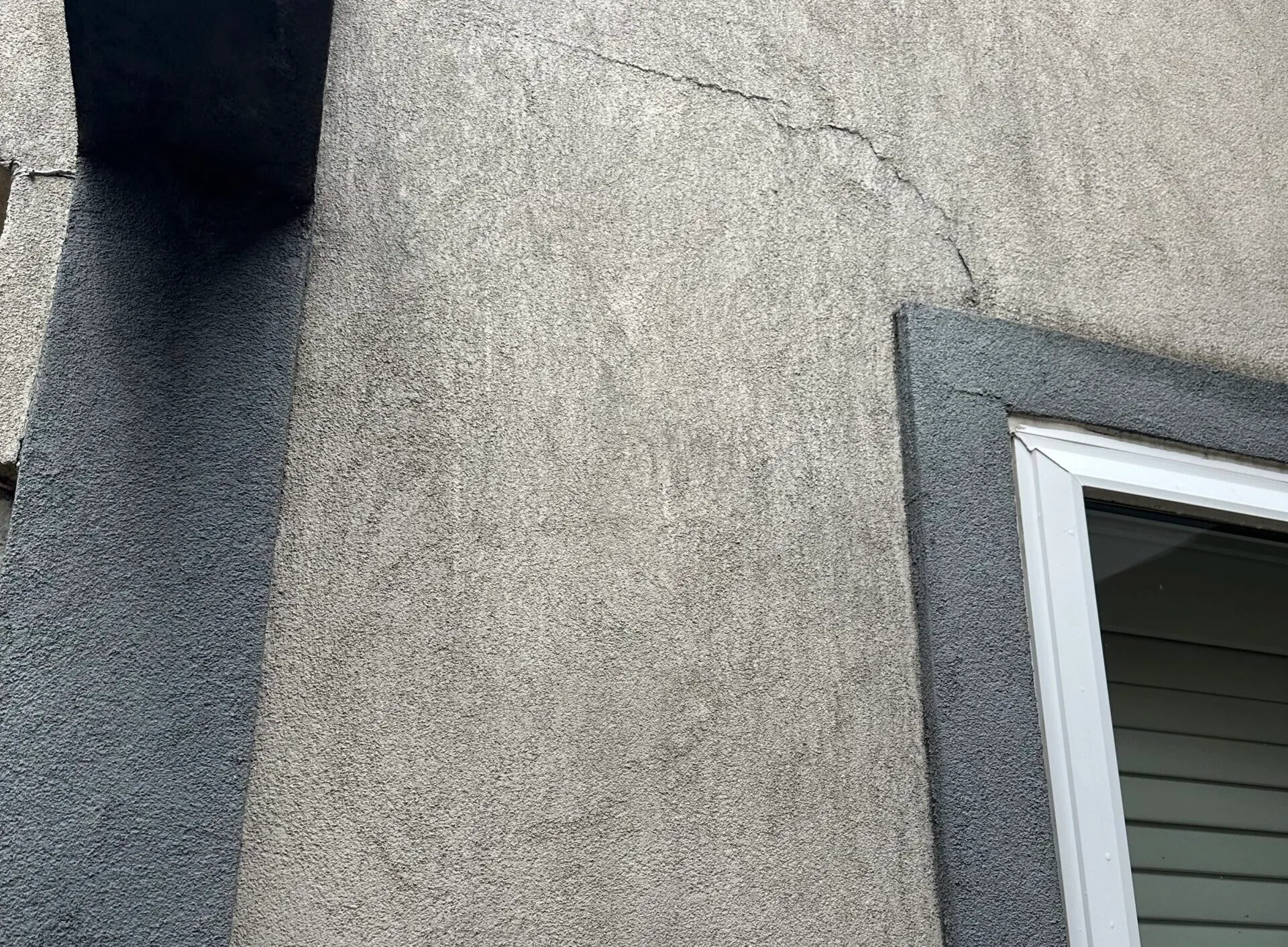Soil erosion might not be the first thing you notice around your property. But it’s often one of the most serious warning signs of underlying foundation trouble. What starts as minor runoff or uneven ground can gradually undermine the very structure on which your home or building depends.
Even subtle shifts in soil moisture or grading can set the stage for long-term structural issues. Erosion often begins unnoticed, but it steadily eats away at the ground supporting your foundation. Whether you’re dealing with minor runoff or significant ground loss, understanding what causes erosion — and how to stop it — is the first step to protecting your property.
What Causes Soil Erosion Around Foundations?
Soil erosion around a structure usually happens because water isn’t draining properly. It should flow away from your foundation, but without the right drainage systems in place, water can wash soil away from your foundation.
Over time, this displaced soil compromises the ground’s ability to support the weight of the structure. Left unaddressed, it creates the perfect conditions for settling, cracking, or even shifting of the foundation.
Common Causes of Soil Erosion
Soil erosion typically doesn’t come from a single source. Instead, it’s often the result of several small issues working together. The most common contributors to soil erosion around North Texas homes and businesses include:
- Poor drainage: Improper grading or short downspouts can cause water to pool near the structure.
- Improper landscaping: Beds, trees, or impermeable hardscaping too close to the home can hold moisture or redirect water.
- Gutter or downspout problems: Leaks or clogs can cause water to overflow the gutter system, often spilling near the foundation.
- Heavy rainfall or flooding: Sudden storms can rapidly displace soil, including the ground around your foundation.
- Expansive clay soil: Various areas of Texas have clay, which expands and contracts with moisture and disrupts soil stability.
How Soil Erosion Damages Foundations
When the soil beneath your foundation shifts or disappears, the foundation itself can move, crack, or sink. This type of damage usually occurs slowly, but once it starts, it only gets progressively worse.
Signs of Foundation Trouble from Erosion
- Visible foundation cracks
- Doors or windows that stick or won’t close properly
- Uneven floors
- Water leaks in crawl spaces or basements
- Noticeable settlement in gaps or at the base of walls
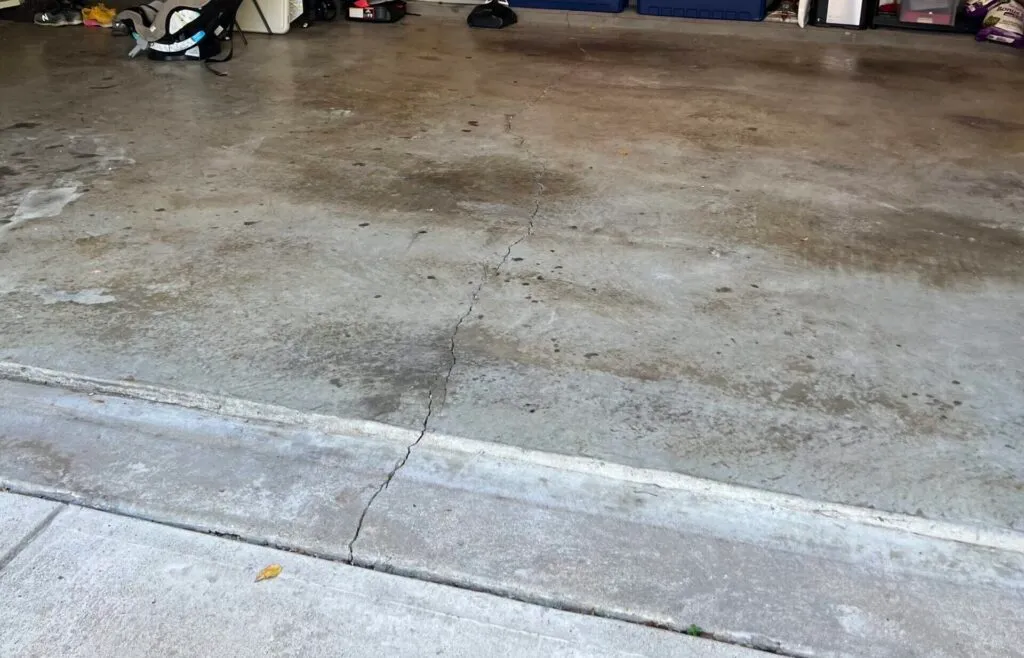
These issues don’t just reduce property value. They can increase repair costs, too, if left unaddressed. If you’re starting to notice early warning signs, it’s worth having the area checked before the damage escalates.
How to Repair Soil Erosion Around the Foundation
Repairing erosion requires a step-by-step approach. Depending on how much soil has been lost and whether your foundation is already affected, your fix might be simple or more involved. The repair process typically goes like this:
Improve Drainage First
Before you address the erosion, you need to fix what caused it. This typically starts with evaluating the entire perimeter to ensure the water is flowing away from the foundation. After an evaluation, we determine the next steps.
Effective drainage improvements might include:
- Extending downspouts at least six feet away
- Regrading the soil so it slopes downward away from the home (one inch per foot for at least five feet)
- Installing French drains or swales
- Adding gravel trenches or dry creek beds
Implementing these changes can help manage water, redirecting it away from your home instead of toward it.
Replace and Compact Lost Soil
Once the drainage is under control, the next step is to refill the eroded areas. It’s important to do this with a suitable material, like quality topsoil or compactable fill material.
When filling, compact in layers every four to six inches. Avoid piling mulch directly against your foundation. The goal here is to create a stable slope that directs water away without soft spots or air gaps.
Install Erosion Control Products
After rebuilding the soil, it’s important that it stays put, especially on sloped lots. Depending on your property, we may recommend:
- Retaining walls to prevent soil migration
- Erosion control blankets or landscape fabric
- Sod, native grasses, or groundcover plants to root the soil in place
- Mulch or gravel barriers that reduce water velocity and dispersion
Reinforce the Foundation if Necessary
If the erosion has led to measurable settlement or significant structural damage, targeted foundation repairs might be necessary. This may include:
- Steel piers for deep, long-term stability
- Concrete pressed piers for traditional slab foundations
- Foam injection or mud jacking for lifting sunken areas
- Pier and beam adjustments with interior and exterior access
The right foundation repair will depend on the extent of the damage and the specifics of your home’s foundation.
Maintain for Long-Term Protection
After remedying the issue, preventing future erosion is more doable than you might think. A few simple maintenance tasks can go a long way in protecting your foundation:
- Clean gutters at least twice per year, more if you live near deciduous trees
- Inspect your downspouts after each major rain
- Fill in low spots annually with topsoil
- Adjust irrigation systems to avoid oversaturation
- Maintain vegetation near the foundation for root support
- Avoid placing heavy objects close to the edge of the home
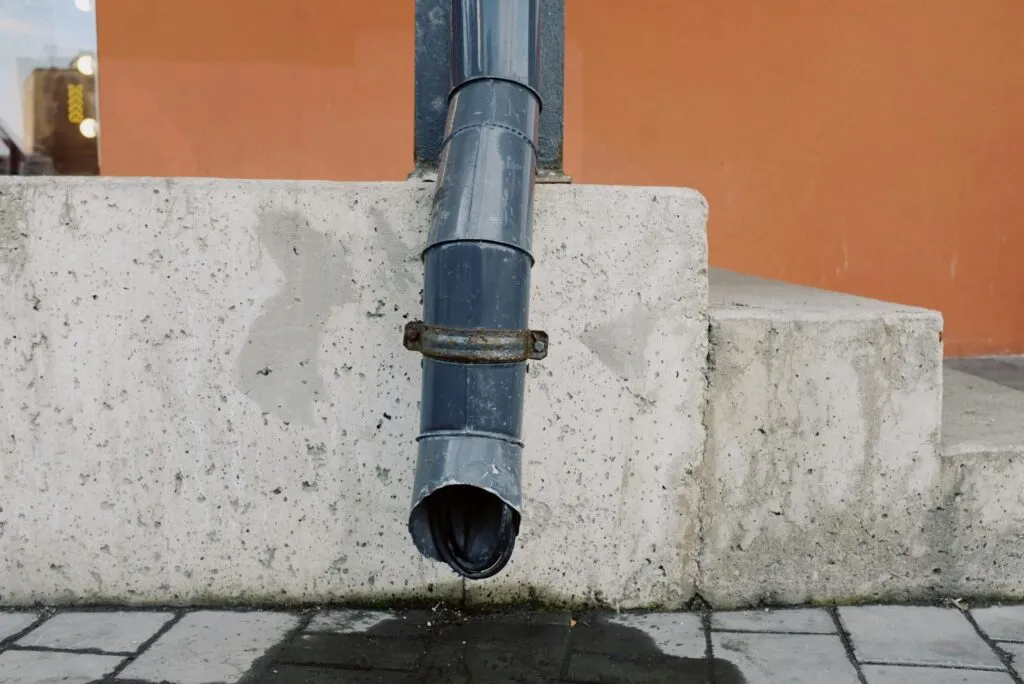
When to Contact a Foundation Professional
While some minor erosion is fixable with DIY maintenance, any major erosion requires professional evaluation. If the erosion is widespread or your foundation is showing signs of distress, it’s time to contact a professional.
A trusted foundation specialist can help assess the extent of the erosion, identify any structural concerns, and recommend the most practical solution for your property.
Pinnacle Foundation Repair has decades of experience working with North Texas soil and weather conditions. If you’re unsure whether your issue is minor or serious, it’s worth getting a second opinion. We offer free, no-pressure foundation evaluations to help you make an informed decision.
Building a Foundation that Lasts
Soil erosion around your foundation doesn’t have to lead to structural damage, but it can if left unchecked. The best approach is a proactive one: identify early warning signs, improve drainage, and keep the ground around your property stable and well-supported.
Whether you’re handling minor erosion on your own or bringing in a professional for larger issues, taking action early is a must for long-term foundation health.

